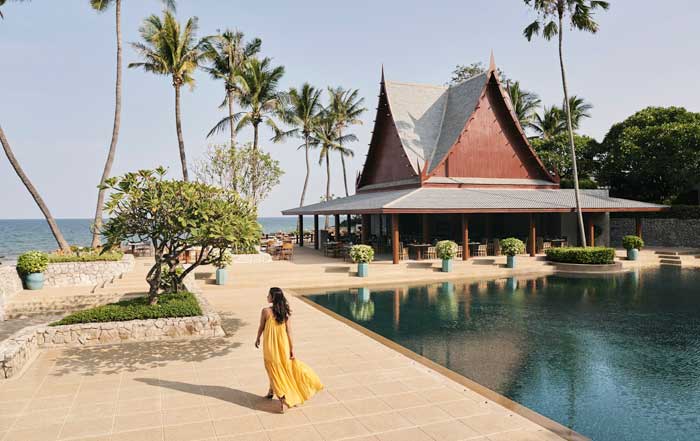The global wellness industry has entered a defining moment, driven by rapid advances in artificial intelligence, wearable devices, and personalized health platforms. What was once considered a niche market has evolved into a dynamic, multi-billion-dollar ecosystem that integrates technology, healthcare, and lifestyle innovation. From AI-powered meditation assistants to biosensing fitness gear, wellness tech startups are shaping how people approach physical and mental health, moving from reactive treatment to proactive self-optimization.
According to the Global Wellness Institute, the wellness economy surpassed $7 trillion in 2024 and is expected to exceed $8.5 trillion by 2027, propelled by consumer demand for accessible, data-driven tools that improve quality of life. This transformation is evident across sectors—from fitness and nutrition to sleep, mindfulness, and preventive healthcare. Startups across the United States, Europe, and Asia are leading this movement, developing innovative products and services that empower individuals to take control of their wellbeing in unprecedented ways.
At the heart of this evolution lies the fusion of technology and human-centered design, where startups are reimagining how people experience wellness in a connected world. Platforms like WellNewTime.com continue to highlight this revolution, offering insights into how digital innovation is reshaping daily health habits.
The Rise of Personalized Health Ecosystems
A key trend driving the wellness tech boom is personalization. Consumers are no longer satisfied with generic wellness advice—they expect data-based insights tailored to their unique biological, behavioral, and emotional profiles. Startups like Whoop, Oura, and Eight Sleep are pioneering this approach by integrating biometric tracking with artificial intelligence to deliver real-time recommendations for optimal rest, recovery, and performance.
The Oura Ring, for example, has evolved from a sleep tracker into a holistic health companion that measures heart rate variability, temperature, and respiratory rate to assess readiness and stress. Similarly, Whoop’s wearable band uses continuous physiological data to help athletes and professionals monitor strain and recovery throughout the day. This wave of personalized technology reflects a broader societal shift toward preventive wellness—using insights to prevent burnout, illness, and poor lifestyle choices before they take root.
Learn more about the interconnected nature of wellness through WellNewTime’s Wellness section, which explores how digital health ecosystems are redefining the meaning of personal care in the modern era.
Mental Wellness Tech: Reimagining Emotional Health
In parallel with physical wellness, mental wellbeing has become a central focus of technology-driven innovation. Global awareness about stress, anxiety, and depression—especially following the pandemic—has inspired a surge in startups offering digital therapeutics, AI therapy tools, and mindfulness platforms.
Companies such as Headspace Health, Calm, and MindLabs have transformed the meditation and therapy landscape by combining neuroscience with accessible digital content. Headspace, in particular, expanded its mission beyond guided meditation to corporate wellness programs, integrating mental health support into workplace culture. These platforms are no longer mere relaxation tools—they represent a scalable solution to global mental health challenges.
AI-driven therapy platforms like Woebot and Wysa employ conversational agents trained in cognitive behavioral therapy (CBT), providing instant emotional support to millions worldwide. Their clinical validation and empathetic design mark a significant advancement in the accessibility of psychological care.
As digital mental health becomes mainstream, companies and wellness publications alike are focusing on how technology can support mindfulness, self-awareness, and resilience. Explore more at WellNewTime’s Mindfulness section, where stories of innovation meet human connection.
The Role of Artificial Intelligence in Preventive Care
Artificial intelligence is redefining the boundaries of wellness technology, particularly in preventive health. Startups are deploying AI models that analyze large datasets—from genetic sequences to lifestyle patterns—to predict disease risks and recommend behavioral interventions.
For instance, ZOE, a UK-based startup, combines microbiome analysis with AI-based dietary coaching to help users understand how their body responds to specific foods. Similarly, Viome in the United States uses RNA sequencing to offer nutrition plans customized to gut health, moving away from calorie counting toward biological optimization.
Meanwhile, AI-driven platforms such as Lumen are introducing metabolic tracking devices that monitor real-time energy usage, providing personalized feedback for weight management and fitness goals. These innovations signify a profound shift toward integrated digital care, where technology not only observes but also interprets human health patterns with scientific precision.
To understand how these advancements connect to everyday wellness practices, WellNewTime’s Health section provides expert insights on nutrition, fitness, and digital transformation in healthcare.
Global Wellness Tech Revolution
Interactive Timeline: Key Milestones & Market Growth
Fitness Tech Startups and the Connected Body
The fitness landscape has undergone an extraordinary transformation since 2020, with digital and hybrid models now dominating global markets. The rise of connected equipment, virtual training, and immersive fitness experiences has redefined how individuals engage with physical activity.
Startups like Tonal, Hydrow, and Peloton have established themselves as leaders in connected fitness, merging community engagement with data-driven training programs. Tonal’s AI-powered wall-mounted gym adjusts resistance dynamically, while Hydrow simulates outdoor rowing experiences with live instructor sessions. Despite challenges in scaling hardware businesses, these startups continue to innovate by introducing subscription-based ecosystems that merge digital fitness, coaching, and health data analytics.
Wearable devices remain a cornerstone of this sector. Apple’s HealthKit and Google Fit have become central platforms for health data integration, enabling interoperability between different devices and apps. This interoperability is what allows individuals to track movement, sleep, heart health, and nutrition through unified dashboards, offering unprecedented visibility into personal wellbeing.
To explore evolving fitness trends and technologies, visit WellNewTime’s Fitness section, where expert analyses connect technology, performance, and health outcomes.
Wellness Tech and the Corporate World
The workplace has become a focal point for wellness technology adoption. With stress, burnout, and remote work challenges reshaping professional dynamics, companies are embracing digital wellness platforms to support employee wellbeing and productivity. Startups like Modern Health, BetterUp, and Lifeworks have gained traction among global corporations by offering holistic digital platforms that integrate mental health support, coaching, and performance analytics.
These platforms go beyond traditional wellness programs by providing personalized assessments and evidence-based recommendations for mental resilience, nutrition, and sleep optimization. For instance, BetterUp, which counts Prince Harry as its Chief Impact Officer, focuses on coaching for leadership development, emotional intelligence, and stress management. Modern Health, on the other hand, delivers culturally adaptable mental health programs through mobile apps that blend human and AI-guided sessions.
The global market for workplace wellness technologies surpassed $60 billion in 2024 and continues to expand rapidly, particularly in North America and Europe. Enterprises recognize that employee wellbeing directly impacts innovation, retention, and profitability. This realization has prompted large organizations like Google, Salesforce, and Microsoft to partner with startups to deliver scalable digital health programs across their global workforces.
For business readers interested in understanding the economics behind this trend, WellNewTime’s Business page explores how wellness-driven strategies are transforming corporate success metrics in 2025.
The Global Expansion of Wellness Startups
Wellness technology is no longer confined to Silicon Valley or London—it is a truly global phenomenon. Startups from Singapore, Germany, Australia, and South Korea are emerging as powerful players in the next generation of digital health innovation.
In Asia, the integration of wellness with traditional medicine has created unique hybrid platforms. Singapore’s Holmusk leverages data science for behavioral health analytics, while South Korea’s Yuhan Care focuses on AI-guided telewellness for chronic disease management. In Europe, Kaia Health from Germany has become a leader in musculoskeletal therapy through its AI-powered movement tracking system, which offers digital physiotherapy via smartphone cameras.
Australia’s growing ecosystem includes Vald Performance, which provides biomechanical assessment tools for elite athletes and physical therapists. The fusion of sports science and AI has positioned the region as an innovation hub for high-performance health technologies. Meanwhile, in the United Kingdom, Second Nature and Thriva are revolutionizing personal diagnostics and weight management by combining at-home testing with AI-driven lifestyle insights.
This international expansion reflects a broader alignment of values: consumers and investors alike are prioritizing sustainability, transparency, and long-term wellbeing over short-term trends. Platforms like WellNewTime’s World section document how these advancements are uniting the wellness community on a global scale.
The Role of Venture Capital and Strategic Investment
Funding has become the lifeblood of wellness tech innovation. Venture capital firms are increasingly recognizing the financial viability and social value of investing in health-focused technologies. In 2024 alone, the global wellness tech sector attracted more than $12 billion in venture funding, according to CB Insights, signaling confidence in the sector’s continued growth.
Leading investors such as Accel, Sequoia Capital, and Andreessen Horowitz have backed companies like Calm, Noom, and Levels Health, fueling their expansion into new markets and product categories. These investments go beyond profit—they reflect a shift toward purpose-driven capital allocation, where impact metrics and health outcomes matter as much as financial returns.
Corporate venture arms from Nike, Adidas, and Johnson & Johnson have also entered the wellness investment arena, supporting startups that align with sustainable performance, digital fitness, and holistic wellbeing. This convergence between corporate giants and agile startups has accelerated innovation across sectors including fitness, telehealth, and nutrition.
For industry observers, WellNewTime’s News portal regularly covers emerging investment stories that shape the future of wellness entrepreneurship.
Wellness in the Age of Smart Environments
The rise of smart homes, connected cities, and ambient health sensors has broadened the scope of wellness technology beyond personal devices. The Internet of Things (IoT) now enables entire environments to adapt to human needs—regulating light, temperature, and air quality to promote mental clarity and physical comfort.
Startups like Withings, Nest Renew, and Airthings are integrating environmental data with health monitoring systems to create adaptive wellness spaces. Withings, for example, launched smart scales and hybrid watches that seamlessly integrate with home sensors to deliver continuous health insights. Meanwhile, Airthings focuses on improving indoor air quality by detecting CO₂, humidity, and particulate matter, offering actionable data to reduce respiratory issues and enhance cognitive function.
As cities evolve toward sustainability, urban wellness tech startups are pioneering solutions that blend environmental health with human wellbeing. Smart public parks equipped with biosensors and outdoor fitness pods are emerging in cities like Stockholm, Vancouver, and Melbourne, aligning urban planning with preventive healthcare goals.
For those passionate about sustainability and wellness innovation, WellNewTime’s Environment page explores how digital tools are advancing eco-conscious wellbeing initiatives worldwide.
Biohacking and Human Performance Optimization
In 2025, biohacking has evolved from an underground movement into a legitimate scientific frontier. Tech entrepreneurs, athletes, and health enthusiasts are turning to quantified self practices—using wearables, continuous glucose monitors, and neurofeedback systems to optimize energy, focus, and recovery.
Companies like Levels, Athletic Greens, and Hanu Health are at the forefront of this shift. Levels provides real-time metabolic feedback through continuous glucose monitoring, helping users fine-tune diet and performance. Athletic Greens offers science-backed nutritional supplementation aimed at supporting energy, immunity, and gut health. Meanwhile, Hanu Health integrates heart rate variability tracking with breathwork coaching to help users manage stress through biofeedback.
Biohacking startups often collaborate with neuroscientists and performance coaches to ensure their methods are grounded in science rather than hype. The growing interest among high-performance professionals—from Silicon Valley executives to Olympic athletes—underscores how deeply technology now influences human potential.
Readers interested in cutting-edge approaches to personal optimization can explore more insights at WellNewTime’s Lifestyle page, where science meets self-improvement in the pursuit of balanced living.
The Integration of Wellness Tech with Healthcare Systems
The line between wellness technology and traditional healthcare is increasingly blurred. Hospitals, insurers, and public health organizations are partnering with startups to extend preventive care and chronic disease management into the consumer sphere. This collaboration is reshaping how healthcare is delivered, making it more personalized, affordable, and continuous.
Fitbit Health Solutions, now part of Google, has become a key player in bridging this divide. By partnering with health insurers and corporate wellness programs, it enables large-scale population health tracking while respecting data privacy standards. Similarly, Apple Health collaborates with medical institutions like Mayo Clinic and Johns Hopkins Medicine to allow patients to share vital data directly from their devices for more proactive care.
Telehealth platforms such as Teladoc Health, Amwell, and Babylon Health are also embracing wellness integration, expanding beyond diagnostics to include lifestyle coaching, nutrition counseling, and stress management. In countries like the United Kingdom and Germany, national healthcare systems are adopting certified wellness apps as reimbursable digital therapeutics under frameworks like DiGA (Digitale Gesundheitsanwendungen).
This hybridization is expected to define healthcare in 2025 and beyond. Instead of episodic treatment, patients now experience continuous health engagement supported by technology, data, and behavior change science. Learn more about this shift in holistic wellbeing and care through WellNewTime’s Health coverage.
The Emergence of Virtual and Augmented Reality Wellness
Virtual reality (VR) and augmented reality (AR) technologies are revolutionizing how people experience relaxation, rehabilitation, and fitness. Startups are blending immersive media with psychology and movement science to create realistic wellness experiences that transcend physical boundaries.
Companies like TRIPP, Supernatural, and Healium are leading this transformation. TRIPP uses immersive VR landscapes combined with breath pacing and cognitive exercises to reduce anxiety and promote mindfulness. Supernatural, acquired by Meta, delivers VR-based full-body workouts that transport users to scenic destinations such as Icelandic cliffs or Californian beaches, turning exercise into an emotional experience. Healium, meanwhile, fuses biofeedback and neurotechnology to create meditative environments that respond to the user’s brainwaves and heart rate in real time.
These technologies also have therapeutic applications in clinical settings. Hospitals use VR-based programs to manage chronic pain, anxiety, and PTSD, providing non-pharmacological alternatives to traditional therapies. The combination of immersive storytelling, guided movement, and biofeedback creates measurable improvements in mood and focus.
For an exploration of how immersive technology intersects with wellness and creativity, WellNewTime’s Innovation section dives into the science and business of the digital wellbeing revolution.
The Role of Data, Ethics, and Privacy in Wellness Innovation
With the exponential growth of health data collection, privacy and ethical governance have become major focal points in the wellness industry. Consumers are increasingly aware of how sensitive their health information is, demanding transparency, security, and accountability from startups and established corporations alike.
Governments and regulators have begun responding to this new digital reality. In the European Union, the GDPR framework continues to serve as the gold standard for data protection, while the U.S. Department of Health and Human Services (HHS) is expanding its oversight on digital wellness apps that collect health-related data. Startups are required to demonstrate compliance not only with technical safeguards but also with ethical principles that prioritize user autonomy and informed consent.
Companies such as Apple, Garmin, and Withings have established strong reputations for data stewardship by emphasizing on-device processing and anonymized analytics. However, smaller startups face challenges balancing innovation speed with robust data protection practices. The emergence of decentralized identity and blockchain-based health data systems is providing promising solutions, allowing users to control how and where their data is shared.
This new data landscape will determine which brands earn long-term trust and market leadership. For updates on wellness data ethics and regulatory evolution, visit WellNewTime’s News page.
The Influence of Social Media and Wellness Communities
Social media has transformed wellness from a solitary pursuit into a shared, global dialogue. Platforms such as Instagram, TikTok, and YouTube have given rise to influential wellness creators who blend authenticity, education, and technology. Startups leverage these digital communities to expand reach and engagement, using AI-powered analytics to tailor content to different audiences.
Brands like Alo Moves, Centr, and Gymshark have mastered community-driven wellness marketing. Alo Moves integrates mindfulness, yoga, and strength training into a digital lifestyle ecosystem supported by its fashion line. Centr, founded by Chris Hemsworth, merges cinematic fitness videos with meal planning and mental resilience training. Meanwhile, Gymshark has transformed from a fitness apparel startup into a digital-first lifestyle movement, demonstrating how wellness and technology converge through storytelling.
AI also plays a growing role in social media wellness ecosystems. Recommendation algorithms now connect users with hyper-personalized wellness content—from guided meditations to body-positive fitness journeys—creating digital mentorship networks that span continents. However, this trend also demands responsibility; misinformation, unrealistic body standards, and pseudoscience remain persistent challenges.
Platforms like WellNewTime’s Brands page showcase authentic wellness companies that combine innovation with trust, helping consumers navigate this expanding online universe of health content.
Future Directions: Merging Science, Empathy, and Technology
As we look toward the second half of the decade, the next phase of the wellness revolution will be characterized by the integration of biotechnology, neuroscience, and empathetic design. The most successful startups will be those that combine technical sophistication with a deep understanding of human behavior, cultural diversity, and sustainability.
Biometric clothing, AI-guided nutrition planning, and emotion-sensitive environments will become commonplace as computing moves closer to the body and even into it. Neuralink, Emotiv, and NextSense are among the pioneers exploring brain-computer interfaces that could one day measure and enhance mental wellness directly. Simultaneously, advances in nanotechnology and biosensors will make real-time health monitoring seamless, unobtrusive, and predictive.
Sustainability will also play a defining role in the future of wellness technology. Eco-conscious consumers are already demanding ethical sourcing, recyclable materials, and low-energy devices. The convergence of green technology and wellness will help reduce environmental footprints while enhancing holistic health outcomes—a core philosophy aligned with the editorial vision of WellNewTime’s Environment coverage.
Conclusion: The Human-Centered Future of Wellness
The global wellness tech movement represents more than a business trend—it is a cultural transformation that redefines how humanity relates to its own health, environment, and purpose. In 2025, startups stand at the intersection of science, empathy, and innovation, bridging the gap between technology and the timeless human desire for balance.
The world’s leading wellness companies—whether in Silicon Valley, Berlin, Seoul, or Sydney—share a common vision: to make wellbeing measurable, achievable, and universal. Through data-driven insight, immersive experiences, and community connection, these innovators are not only reshaping markets but also inspiring a new definition of what it means to live well.
For readers seeking continuous updates on this evolving field, WellNewTime.com remains a trusted source of global wellness intelligence. From wellness innovation to fitness trends, mindfulness practices, and business insights, the platform highlights the technologies and ideas that will shape the next generation of health and happiness.
The future of wellness is intelligent, interconnected, and deeply human—a symphony of science and compassion orchestrated by visionary startups transforming the way the world thrives.











Wellness thrives through meaningful connections, community engagement, and environmental consciousness that links personal health to planetary well-being.
Connection & Community
Global Wellness Inspiration
🇯🇵 Ikigai
Purpose in daily actions
🇸🇪 Lagom
Balance & simplicity
🇮🇹 Community
Social meals & connection
🇮🇳 Ayurveda
Mind-body alignment